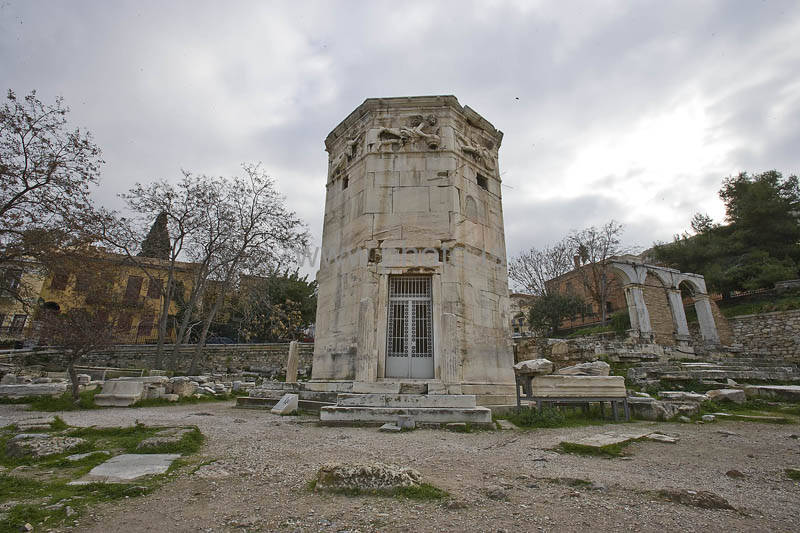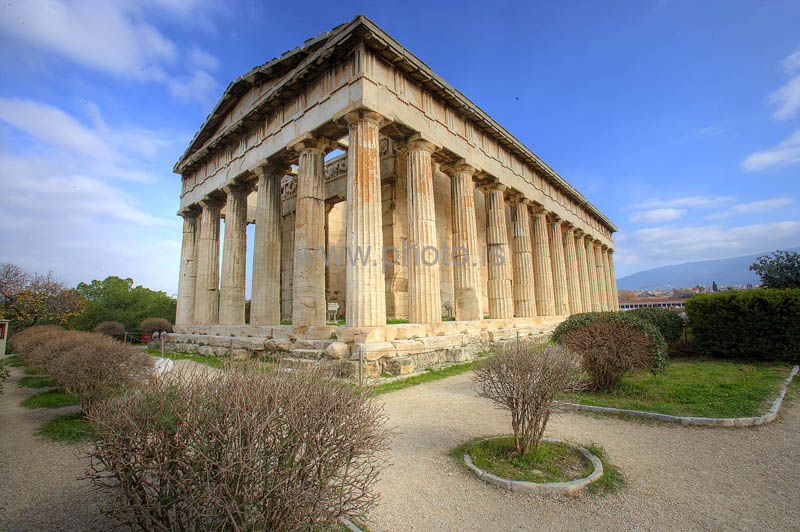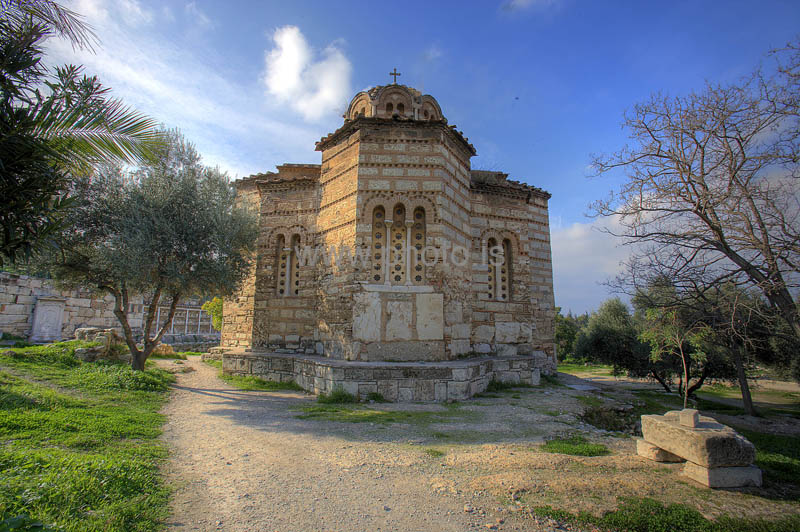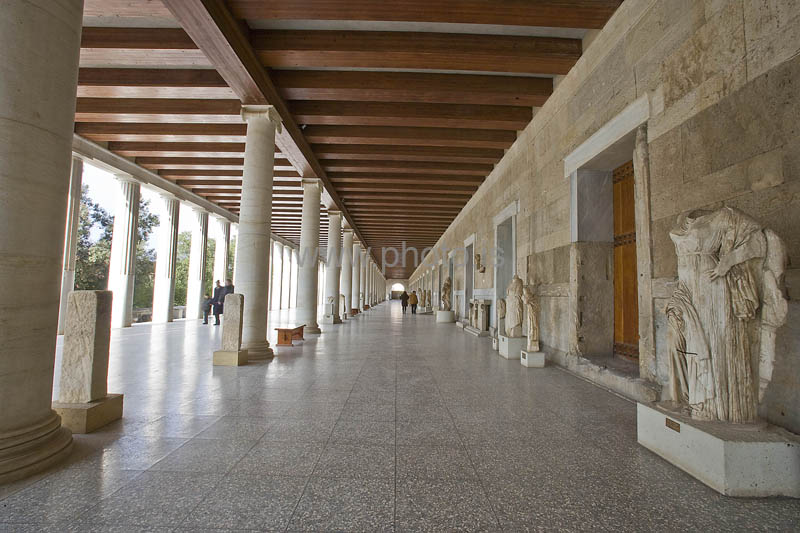6.4.2009 | 08:47
Jaršskjįlfti ķ Grikklandi 2008
Jaršskjįlfti ķ Grikklandi 2008, Aženuborg.
Ég var į feršalagi ķ Grikklandi, 6. janśar 2008 žegar jaršskjįlfti uppį Mw6.2 aš stęrš reiš yfir landiš. Ekki varš neitt tjón ķ žessum jaršskjįlfta, hvorki į fólki né eignum.
Ég var staddur į hóteli ķ mišborg Aženu uppi į 6 hęš žegar skjįlftinn reiš yfir og var undarlegt aš upplifa "alvöru" jaršskjįlfta og finna hvernig žetta stóra hśs sveiflašist til. Žetta fékk mig til aš hugleiša aš žaš vęri meš ólķkindum aš allra žęr gömlu byggingar sem ég hafši veriš aš skoša vikurnar į undan hefšu nįš aš standa sumar hverjar ķ žśsundi įra. Žennan dag stóš einmitt til aš skoša nokkrar af žekktustu byggingum Aženu borgar eins og The Tower of the Winds in Plaka, Temple of Hephaestus, Church of the Holy Apostles, Stoa of Attalos, Hill of the Nymphs and the Pnyx, Valley of the Muses, Prison of Socrates, Theatre of Dionysus, Propylaea Acropolis, Parthenon Acropolis, Erechtheum Acropolis og Temple of Olympian Zeus.
Sum af žessum svęšum voru lokuš vegna jaršrskjįlftans, en žrįtt fyrir žaš nįšum viš aš skoša alla žessa staši įsamt fleiri fallegum stöšum sem Ažena hefur upp į aš bjóša.
Fyrsti stašurinn sem aš viš skošušum var The Tower of the Winds in Plaka, Greece. Žar er klukka ķ turni sem gengur fyrir vatni og aš einhverju leitir fyrir vind lķka. (smelliš į mynd til aš sjį fleiri myndir)

The Tower of the Winds in Plaka, Greece, The Tower of the Winds, also called horologion (timepiece), is an octagonal Pentelic marble clocktower on the Roman agora in Athens. The structure features a combination of sundials, a water clock and a wind vane. It was supposedly built by Andronicus of Cyrrhus around 50 BC, but according to other sources might have been constructed in the 2nd century BC before the rest of the forum. (to view gallery: click image) (C)2009 Kjartan P. Siguršsson
Į wikipedia mį lesa nįnar eftirfarandi žašan sem fyrrgreindar upplżsingar eru fengnar:
The 12 m tall structure has a diameter of about 8 m and was topped in antiquity by a weathervane-like Triton that indicated the wind direction. Below the frieze depicting the eight wind deities — Boreas (N), Kaikias (NE), Eurus (E), Apeliotes (SE), Notus (S), Livas (SW), Zephyrus (W), and Skiron (NW) — there are eight sundials.[2] In its interior, there was a water clock (or clepsydra), driven by water coming down from the Acropolis. Recent research has shown that the considerable height of the tower was motivated by the intention to place the sundials and the wind-vane at a visible height on the Agora, making it effectively an early example of a clocktower. According to the testimony of Vitruvius and Varro, Andronicus of Cyrrhus designed the structure.
Nęst var skošaš Temple of Hephaestus sem er ein best varšveitta byggingin į svęšinu frį žessum tķma (smelliš į mynd til aš sjį fleiri myndir)

The Temple of Hephaestus and Athena Ergane, αĻŒς του ΗφαĪÆστου και της Ī‘θηνĪ¬ς ΕργĪ¬νης, also known as the Hephaisteion, φαιστεĪÆον, Theseion, ΘησεĪÆον, is the best preserved ancient Greek temple. It is a Doric order peripteral temple, located at the north-west side of the Agora of Athens, on top of the Agoraios Kolonos (Ī‘γοραιος) hill. From the 7th century until 1834, it served as the Greek Orthodox church of St. George Akamates (to view gallery: click image) (C)2009 Kjartan P. Siguršsson
Į wikipedia mį lesa nįnar eftirfarandi žašan sem fyrrgreindar upplżsingar eru fengnar
Nęst var gömul kirkja skošuš sem ber nafniš Church of the Holy Apostles (smelliš į mynd til aš sjį fleiri myndir)

The Church of the Holy Apostles, also known as Holy Apostles of Solaki, Ī†γιοι Ī‘πĻŒστολοι ΣολĪ¬κη, is located in the Ancient Agora of Athens, Greece, and can be dated to around the late 10th century. Solakis may be the family name of those who sponsored a later renovation of the church, or from "Solaki" for the densely populated area around the church in the 19th century. (to view gallery: click image) (C)2009 Kjartan P. Siguršsson
The church is particularly significant as the only monument in the Agora, other than the Temple of Hephaestus, to survive intact since its foundation, and for its architecture: it was the first significant church of the middle Byzantine period in Athens, and marks the beginning of the so-called "Athenian type", successfully combining the simple four-pier with the cross-in-square forms. The church was built partly over a 2nd century nymphaion, and was restored to its original form between 1954 and 1957.
Į wikipedia mį lesa nįnar eftirfarandi žašan sem fyrrgreindar upplżsingar eru fengnar
Rétt hjį kirkjunni er svo 2ja hęša bygging Stoa of Attalos, Athens, Greece. (smelliš į mynd til aš sjį fleiri myndir)

The Stoa of Attalos, Attalus, is recognised as one of the most impressive stoa in the Athenian Agora. It was built by and named after King Attalos II of Pergamon who ruled between 159 BC and 138 BC. (to view gallery: click image) (C)2009 Kjartan P. Siguršsson
Į wikipedia mį lesa nįnar eftirfarandi žašan sem fyrrgreindar upplżsingar eru fengnar
Typical of the Hellenistic age, the stoa was more elaborate and larger than the earlier buildings of ancient Athens. The stoa's dimensions are 115 by 20 metres wide and it is made of Pentelic marble and limestone. The building skillfully makes use of different architectural orders. The Doric order was used for the exterior colonnade on the ground floor with Ionic for the interior colonnade. This combination had been used in stoas since the Classical period and was by Hellenistic times quite common. On the first floor of the building, the exterior colonnade was Ionic and the interior Pergamene. Each story had two aisles and twenty-one rooms lining the western wall. The rooms of both stories were lighted and vented through doorways and small windows located on the back wall. There were stairways leading up to the second story at each end of the stoa. The building is similar in its basic design to the Stoa that Attalos' brother, and predecessor as king, Eumenes II had erected on the south slope of the Acropolis next to the theatre of Dionysus. The main difference is that Attalos' stoa had a row of rooms at the rear on the ground floor that have been interpretted as shops
Annars tók ég um 3000 myndir ķ Grikklandi įramótin 2007-2008 ķ umręddri ferš og mun ég reyna aš birta eitthvaš af žessum myndum hér į blogginu žegar tękifęri gefst til. Enski textinn meš myndunum er frį wikipedia žar sem hęgt er aš fręšast nįnar um žessi fyrirbęri sem myndirnar sżna. ![]() Kjartan WWW.PHOTO.IS
Kjartan WWW.PHOTO.IS

|
Tugir lįtnir į Ķtalķu |
| Tilkynna um óvišeigandi tengingu viš frétt | |
Meginflokkur: Feršalög | Aukaflokkar: Jaršfręši, Menntun og skóli, Vķsindi og fręši | Breytt 8.4.2022 kl. 09:52 | Facebook


 andrigeir
andrigeir
 annaeinars
annaeinars
 annalilja
annalilja
 apalsson
apalsson
 agbjarn
agbjarn
 arnigunn
arnigunn
 ormurormur
ormurormur
 asdisran
asdisran
 safinn
safinn
 baldvinj
baldvinj
 pelli
pelli
 berglist
berglist
 kaffi
kaffi
 birgitta
birgitta
 braxi
braxi
 gattin
gattin
 bryn-dis
bryn-dis
 bryndisisfold
bryndisisfold
 brynja
brynja
 brylli
brylli
 brandarar
brandarar
 tourguide
tourguide
 ding
ding
 dofri
dofri
 kvotasvindl
kvotasvindl
 eggman
eggman
 jari
jari
 einari
einari
 jaxlinn
jaxlinn
 emilhannes
emilhannes
 erla1001
erla1001
 kamilla
kamilla
 eydis
eydis
 ea
ea
 uthlid
uthlid
 fridaeyland
fridaeyland
 africa
africa
 kransi
kransi
 gretaulfs
gretaulfs
 gudni-is
gudni-is
 gudbjornj
gudbjornj
 fifudalur
fifudalur
 mosi
mosi
 godpool
godpool
 gurrihar
gurrihar
 faraldsfotur
faraldsfotur
 gudrunmagnea
gudrunmagnea
 tilveran-i-esb
tilveran-i-esb
 skulablogg
skulablogg
 gbo
gbo
 tudarinn
tudarinn
 hallgrimurg
hallgrimurg
 vulkan
vulkan
 harpaelin
harpaelin
 heidistrand
heidistrand
 skessa
skessa
 heidathord
heidathord
 blekpenni
blekpenni
 diva73
diva73
 herdis
herdis
 himmalingur
himmalingur
 hjorleifurg
hjorleifurg
 hjorturgud
hjorturgud
 maple123
maple123
 don
don
 hreinsamviska
hreinsamviska
 horduragnarsson
horduragnarsson
 ingolfurasgeirjohannesson
ingolfurasgeirjohannesson
 kreppan
kreppan
 jeg
jeg
 jogamagg
jogamagg
 hansen
hansen
 joiragnars
joiragnars
 jonaa
jonaa
 jonasantonsson
jonasantonsson
 jas
jas
 jonhalldor
jonhalldor
 fiski
fiski
 jon-o-vilhjalmsson
jon-o-vilhjalmsson
 jonpallv
jonpallv
 jonr
jonr
 skodunmin
skodunmin
 jonsnae
jonsnae
 prakkarinn
prakkarinn
 nonniblogg
nonniblogg
 drhook
drhook
 karlol
karlol
 kari-hardarson
kari-hardarson
 kentlarus
kentlarus
 askja
askja
 kjarrip
kjarrip
 kreppukallinn
kreppukallinn
 bubot
bubot
 lauola
lauola
 larahanna
larahanna
 lara
lara
 liljabolla
liljabolla
 lillagud
lillagud
 lindalea
lindalea
 lydurarnason
lydurarnason
 magnusvignir
magnusvignir
 mammzla
mammzla
 maggaelin
maggaelin
 elvira
elvira
 marinogn
marinogn
 marinomm
marinomm
 gummiarnar
gummiarnar
 martasmarta
martasmarta
 manisvans
manisvans
 methusalem
methusalem
 morgunbladid
morgunbladid
 mortenl
mortenl
 nanna
nanna
 alvaran
alvaran
 omarragnarsson
omarragnarsson
 huldumenn
huldumenn
 svarthamar
svarthamar
 skari60
skari60
 pallthayer
pallthayer
 ljosmyndarinn
ljosmyndarinn
 proletariat
proletariat
 hnodri
hnodri
 totally
totally
 siba
siba
 duddi9
duddi9
 sigurfang
sigurfang
 siggi-hrellir
siggi-hrellir
 sij
sij
 siggivalur
siggivalur
 zunzilla
zunzilla
 skastrik
skastrik
 luther
luther
 snorrihs
snorrihs
 shv
shv
 eyjann
eyjann
 saemi7
saemi7
 solvi70
solvi70
 theodorn
theodorn
 toshiki
toshiki
 daystar
daystar
 vefritid
vefritid
 eggmann
eggmann
 vilhelmina
vilhelmina
 postdoc
postdoc
 harleyguy
harleyguy
 steinibriem
steinibriem
 steinisv
steinisv
 valli57
valli57
 toro
toro
 ovinurinn
ovinurinn
 steistei
steistei
 aevark
aevark
Athugasemdir
Takk fyrir svona skemmtileg yfirlysing af Grekklandi. Mer lidir betra bara ad hugsa thangad.
Lissy (IP-tala skrįš) 6.4.2009 kl. 10:32
žś getur fariš inn į corrieredellasera.it og séš mindirnar frį jaršskjįltanum ķ nótt.Hörmulegt.'A vini sem bśa į Castel di Sangro,hringdi ķ žį ķ morgun žau eru į ķfi en seigja aš žetta séi skelfilegt įstand og aš daušatölurnar eigji eftir aš hękka.Hef feršast mikiš um alla Italķu žegar ég bjó žar (jś 30 įr) og aš hugsa aš öll žessi žorp,menning ķ hśsarbiggingum manslķf brest ég ķ grįt,žó ég bśi nśna hér. Kvešjur.
Sigurbjörg Siguršardóttir, 6.4.2009 kl. 16:32
Viš į Ķslandi gerum okkur ekki alveg grein fyrir žessum hörmungum. Žó svo aš viš höfum oft upplifaš jaršskjįlfta, aš žį er eyšileggingarmįtturinn ekki eins mikill į Ķslandi eins og ķ žessum löndum viš Mišjaršarhafiš. Bergiš er svo hart į žessum stöšum aš žegar žaš brotnar og fer į staš, aš žį verša afleišingarnar margfalt verri en viš žekkjum. Jaršvegurinn og bergiš į Ķslandi gefur t.d. mun meira eftir. Einnig eru hśs į Ķslandi byggš meš žaš ķ huga aš žola meiri įlag en gengur og gerist.
En hér mį sjį tjóniš sem varš ķ sķšasta Sušurlandsskjįlfta, en žį flaug ég yfir og tók žessar myndir:
http://photo.blog.is/blog/photo/entry/554911/
Kjartan Pétur Siguršsson, 6.4.2009 kl. 16:59
Bęta viš athugasemd [Innskrįning]
Ekki er lengur hęgt aš skrifa athugasemdir viš fęrsluna, žar sem tķmamörk į athugasemdir eru lišin.